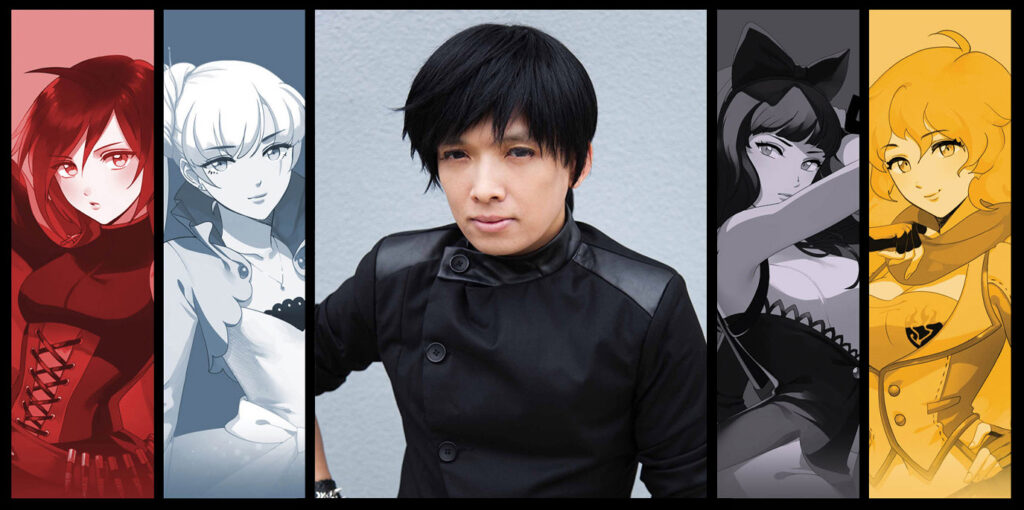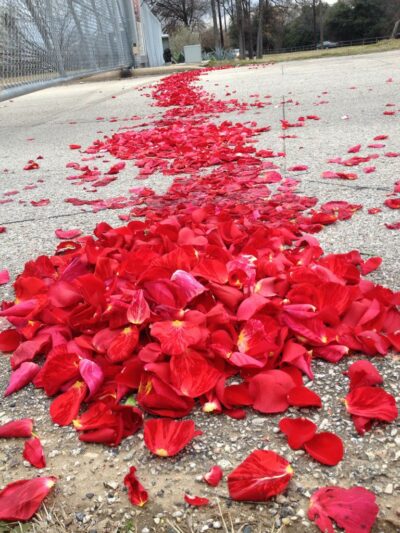As a highly expressive art form, animation readily reveals the signature of its animator. From Hayao Miyazaki’s depictions of lovingly home-cooked meals in response to wartime and post-war scarcity in Japan to Ralph Bakshi’s heavy use of photographic references for backgrounds to evoke a sense of gritty realness, it is difficult to be an animator and not show your innermost thoughts, hopes, fears and values.
While these films are certainly not the product of any one person, there is a stark difference between the hands-on involvement of animation directors and live-action directors.
Some live-action directors are actors. Many of the most celebrated are not. By contrast, every animation director is an animator.
Sometimes, a live-action director is purely professional, performing the job with surgical precision but leaving little of themselves on the screen. I don’t say this to demean anyone’s work. This is actually quite common with directors of television shows, who might pop in to direct an episode or two in order to lighten the workload of the main showrunners. The capacity to put one’s own artistic ego aside and trust the expertise of your actors, your wardrobe department, and countless other contributors is an important and laudable skill. And I’m sure, to some degree, this happens in animated television, as well.
Even so–and keep in mind that I’m no expert, merely a fan of animation, so take this with a grain of salt–given the nature of animation, I imagine it’s much harder to get away with such calculating competence. Animation is a huge, intensive process that, depending on the scene, can take hundreds of hours just to animate two minutes. So, I don’t think animators are likely to last in the business unless they have an intense, burning passion for the art. And that’s even assuming they’re working under the best conditions, which many animators decidedly are not.
What I’m getting at is that animators are, in essence, auteurs by default. Though animators are making films and television, when conceptualizing them as artists, it would probably be more accurate to compare them to painters than filmmakers. They put themselves in the cel just as the painter puts themselves on the canvas.
But the aforementioned examples of Miyazaki and Bakshi are decidedly 2D, hand-drawn animators. What about 3D animation? Is it still just as revealing? Judging by the works of Monty Oum, I would certainly say yes.

Monty Oum, an independent animator from Rhode Island, produced fan content based primarily on video games starting in roughly 2002. He first garnered significant attention in 2007 with the release of Haloid, a Metroid and Halo crossover fan film originally published on the now defunct Game Trailers website, though fan uploads are readily available on YouTube. Crafted with assets from Halo 2 and Super Smash Bros. Melee, full of over-the-top action, loving references to pop culture and featuring a surprisingly warmhearted ending, this film was the prototype for what would become Oum’s more famous works.
Later that same year, Oum published another crossover fan film on the same site. Titled Dead Fantasy, characters from the roleplaying game franchise Final Fantasy faced off against the Dead or Alive fighting game series roster. Between these two fan films, Oum formed his signature style, which largely consisted of pretty anime girls performing acts of impossible acrobatics and incredible feats of strength. His fight scenes are fast-paced and floaty, reminiscent of live-action wire-fu. Characters launch each other through the air and crash through walls of solid stone, only to get right back up and do it all over again. Following the Rule of Cool with religious devotion, Oum’s fight scenes are like if Yuen Woo-ping made a movie using VTuber models.
After a brief stint in video game development, Oum made fast friends with the co-founder of production company Rooster Teeth, Burnie Burns, in 2009. A year later, it was announced that Oum would be an animator on Red vs. Blue’s 8th season.
Red vs. Blue (RvB) was, at the time, the flagship web series for Rooster Teeth. For several seasons, RvB was purely a machinima, limited by the Halo game engine for its storytelling. Characters could express themselves via running, crouching, jumping, shooting and bobbing their head up and down, with the latter being the primary method of showing which character was talking. When Oum joined the project, he utilized full 3D animation to introduce his high-energy fight scenes to the franchise. Not purely aesthetically pleasing, these fight scenes tested the physical and mental limits of the characters, adding an additional dimension of catharsis to the tragicomedy of the series.
And finally, the crown jewel, Oum’s magnum opus: RWBY (Pronounced “Ruby”). The beginnings of RWBY are the sort of thing rags-to-riches myths are made of. The series was born from a half-remembered dream involving four colors: red, white, black and yellow, hence the title of the series. The details were hashed out with co-workers during midnight lunch breaks at Denny’s, where the geography of Remnant–the fantasy world of RWBY–was fashioned from ketchup stains on a paper napkin.
On November 12, 2012, “RWBY ‘Red’ Trailer” was published on YouTube. A young girl clad in a red hood and black dress tears through shadowy werewolves with a giant scythe that transforms into a high-powered sniper rifle (or, as the series’ tagline phrases it, “it’s also a gun”). With 17 million views at the time of this writing, this trailer was the wider world’s introduction to Monty Oum.
The series proper was released on Rooster Teeth’s YouTube channel in July of 2013. Highly anticipated by RT-faithfuls and Oum’s own fanbase alike, the US-produced anime quickly became a cult hit. With action, drama, comedy, tragedy and an intuitive knowledge of when to not take itself too seriously, the web series has survived and thrived for ten years and nine seasons. The characters have been featured in video games and comic book crossovers. Elements of the series have even cameoed in major motion pictures such as Doctor Sleep and the latest Matrix film. The series has also been adapted and spun off into other mediums, including manga, comic books and novels.
RWBY is a heartfelt, fun and occasionally insightful series that is already inspiring a new generation of artists, which I alluded to in a previous post. All of this is reason enough to look into Oum’s work. But that isn’t why I did so.
Though I am an avid fan of RWBY today, when I first saw screenshots, I was unimpressed. Having been a teen in the 20000s, I am no stranger to shoddy North American products trying to bank off the anime aesthetic. In retrospect, I was mostly just being a snob. Some shows, such as Totally Spies, were actually pretty good, while others, like Avatar: The Last Airbender, were brilliant. In 2014, though, I was skeptical of any American production emulating the look of anime, as I had experienced a few that lacked the heart that made me fall in love with that particular branch of animation.
In the end, what got me to watch RWBY, and Oum’s work in general, was his heart and spirit. Unfortunately, I learned about that heart and spirit from those mourning his loss.

Monty Oum passed away on February 1, 2015, as a result of an unspecified allergic reaction during a routine medical procedure. Of the nine seasons of RWBY, Oum only lived to see two released and worked on a third.
Monty was well-loved. By family. By friends. By his wife, Sheena. And by his fans. Upon news of Oum’s death, an anonymous supporter scattered red rose petals by the front gates of Rooster Teeth headquarters in his honor (pictured right).
Friends and fans took to social media in praise and grief. However, while his talent for animation was certainly given due respect, I more often saw praise for the man behind the animation. Monty Oum was a loyal friend and avid supporter of the arts. “Keep moving forward” was his rallying cry and remains the central message of RWBY to this day. His sentiments, often posted on social media, were immortalized in the song “Indomitable” from RWBY’s sixth season:
I believe that the human spirit is indomitable. If you endeavor to achieve, it will happen given enough resolve. It may not be immediate, and often your greater dreams are something you will not achieve within your own lifetime. The effort you put forth to anything transcends yourself, for there is no futility even in death.
Seeing this outpouring of love and respect for Monty Oum, I felt compelled to at least give his work a chance.
RWBY turned out to be a series that moved me, that helped me discover things about myself I never understood before. And I know from speaking with fellow fans that I am far from the only one. The web series has Oum’s signature Rule of Cool animation, yes. But it also has his indomitable spirit. His compassion. His ambition. RWBY was, at the time of its initial release, a silly little indy project he made with friends from work with amateur vocal performances, an animation budget of $4, a ham sandwich and a whole lot of heart. Now it’s an epic, globetrotting saga with loyal fans around the world, and an official Japanese-language release and a fan-made French dub as well. Even as the series has gotten bigger and the production values have gotten better, RWBY still has the spirit of that silly little indy project Monty wanted to make with his friends.
I think it’s a precarious notion to praise an artist who died young. We risk making it all about the art. We risk mourning the hypothetical art that could have been, rather than the life lost, as though the value of a human life is measured in how many cool things we can make before we die. Make no mistake, my goal in this writing is not to mourn the animations that could have been made. In his young life, Oum already gave the world more than can be asked of any human being. If you choose to mourn, I hope you instead mourn the life lost. Mourn for his friends, his family, his wife and the countless lives he touched. Mourn for those who were left behind. And personally, I need to mourn that I’ll never be able to thank him for touching my heart. To mourn that a kindhearted man left us far too soon.
More than any of that, though, we should celebrate that we were blessed enough to have him here in the first place.
Monty was an inspiring person and a captivating artist. It was the admiration of others that made me seek out his work. I hope that my admiration for him does the same for you.
